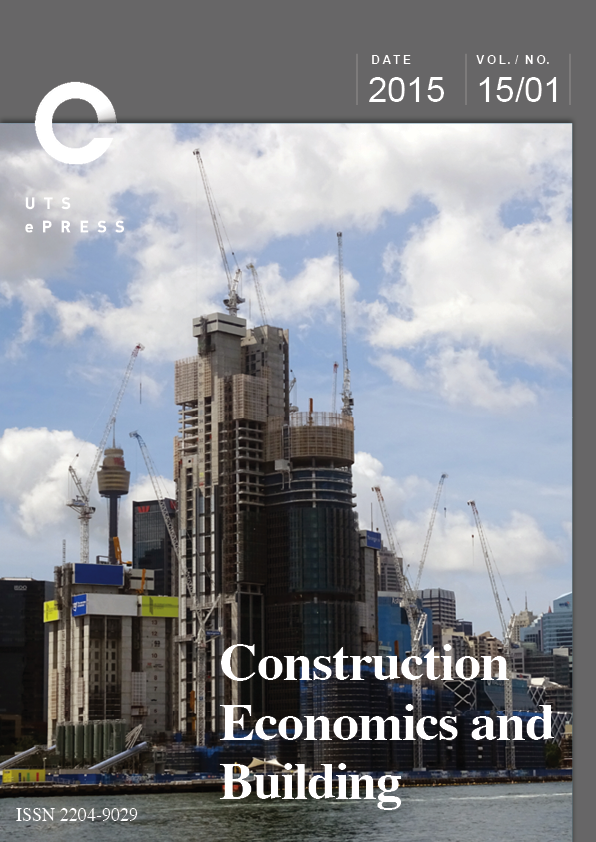Performance of Project Alliancing in Australasia: a Digest of Infrastructure Development from 2008 to 2013
Main Article Content
Abstract
Project and program alliances have been an accepted form of project procurement for public infrastructure engineering projects in Australia and New Zealand (Australasia). Alliancing often provides best value and superior value for money when compared to traditional approaches such as Design and Construct, however considerable debate continues about its success and applicability. This paper reports on three studies of completed construction project alliance performance in 2008, 2010 and 2012. Consolidated findings are presented on 61 project alliances, data is analysed and emerging trends discussed. Recent government policy changes in Australia at Federal and State level have led to a decline in the number of project alliances, however, while the volume of alliance activity is declining it still represents billions of dollars of infrastructure construction work being undertaken. Results also revealed that communication and trust between the executive leadership and operational management teams was a major factor contributing to the functioning of the alliance. Furthermore, the research identifies several key factors that were necessary preconditions for successful alliances.
Paper Type: Research article
Article Details
Section
Authors who publish with this journal agree to the following terms:
a) Authors retain copyright and grant the journal right of first publication with the work simultaneously licensed under a Creative Commons Attribution License that allows others to share and adapt the work with an acknowledgement of the work's authorship and initial publication in this journal.
b) Authors are able to enter into separate, additional contractual arrangements for the non-exclusive distribution of the journal's published version of the work (e.g., post it to an institutional repository or publish it in a book), with an acknowledgement of its initial publication in this journal.
c) Authors are permitted and encouraged to post their work online (e.g., in institutional repositories or on their website) prior to and during the submission process, as it can lead to productive exchanges, as well as earlier and greater citation of published work (See The Open Access Citation Advantage Service). Where authors include such a work in an institutional repository or on their website (ie. a copy of a work which has been published in a UTS ePRESS journal, or a pre-print or post-print version of that work), we request that they include a statement that acknowledges the UTS ePRESS publication including the name of the journal, the volume number and a web-link to the journal item.
d) Authors should be aware that the Creative Commons Attribution (CC-BY) License permits readers to share (copy and redistribute the work in any medium or format) and adapt (remix, transform, and build upon the work) for any purpose, even commercially, provided they also give appropriate credit to the work, provide a link to the license, and indicate if changes were made. They may do these things in any reasonable manner, but not in any way that suggests you or your publisher endorses their use.
